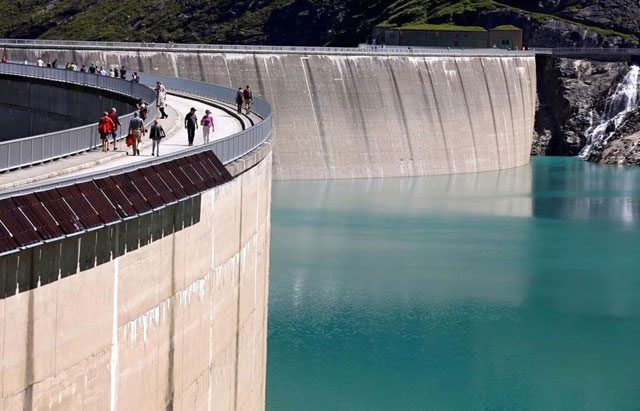A new study published on June 14 reveals that the volume of global reservoirs has decreased over the past 20 years, despite a construction boom that has increased storage capacity. The study asserts that new dams will not be sufficient to address the ongoing water stress…

Mooserboden Hydroelectric Reservoir in Austria. (Photo: Reuters).
The study, published in the journal Nature Communications, indicates that, according to satellite data, the isolated water volume in 7,245 reservoirs worldwide has decreased from 1999 to 2018, despite an annual capacity increase of 28 km3.
Dr. Huilin Gao, the study’s author from Texas A&M University, stated that climate change is the main factor leading to the reduced water storage efficiency of reservoirs, although the increasing demand for water also plays a crucial role. Dr. Gao explained that even if temperatures stop rising, the demand for water and new construction projects will continue to increase.
According to the study, the decrease in water storage is particularly concentrated in the Southern Hemisphere, especially in Africa and South America, where the demand for water is rapidly increasing and new reservoirs are not filling up as expected. However, the study did not account for the impact of sedimentation—a persistent issue predicted to reduce stored water by 25% by 2050. Prolonged drought conditions also raise questions about the feasibility of large reservoirs.
Last week, the International Hydropower Association (IHA) stated that new dams and reservoirs play a vital role in facilitating water flow regulation amidst increasingly extreme climate conditions. According to the IHA, as the climate becomes more unstable, there will be a greater need for water storage infrastructure, which is also an important source of low-carbon electricity.




















































